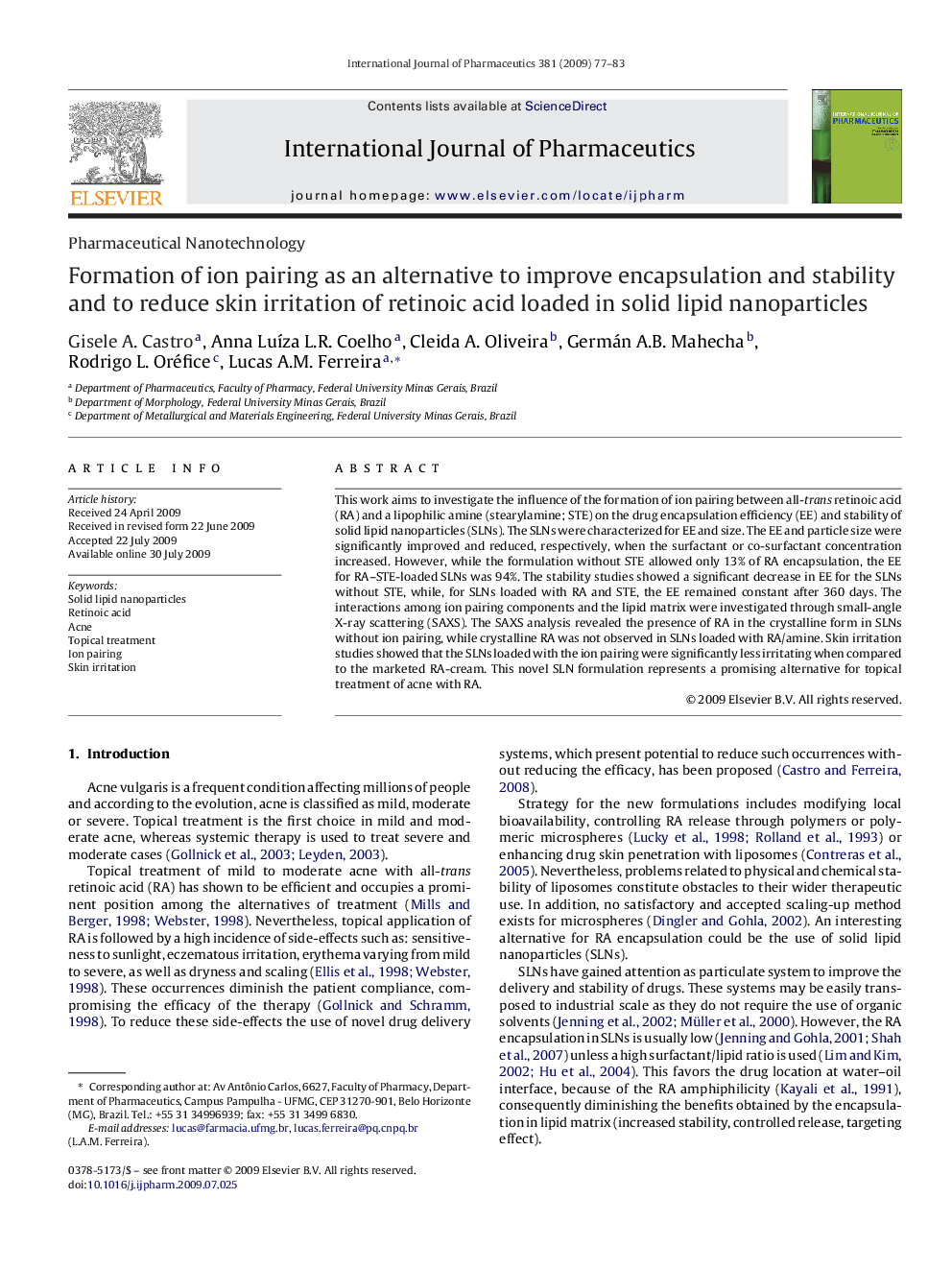| Article ID | Journal | Published Year | Pages | File Type |
|---|---|---|---|---|
| 2504320 | International Journal of Pharmaceutics | 2009 | 7 Pages |
This work aims to investigate the influence of the formation of ion pairing between all-trans retinoic acid (RA) and a lipophilic amine (stearylamine; STE) on the drug encapsulation efficiency (EE) and stability of solid lipid nanoparticles (SLNs). The SLNs were characterized for EE and size. The EE and particle size were significantly improved and reduced, respectively, when the surfactant or co-surfactant concentration increased. However, while the formulation without STE allowed only 13% of RA encapsulation, the EE for RA–STE-loaded SLNs was 94%. The stability studies showed a significant decrease in EE for the SLNs without STE, while, for SLNs loaded with RA and STE, the EE remained constant after 360 days. The interactions among ion pairing components and the lipid matrix were investigated through small-angle X-ray scattering (SAXS). The SAXS analysis revealed the presence of RA in the crystalline form in SLNs without ion pairing, while crystalline RA was not observed in SLNs loaded with RA/amine. Skin irritation studies showed that the SLNs loaded with the ion pairing were significantly less irritating when compared to the marketed RA-cream. This novel SLN formulation represents a promising alternative for topical treatment of acne with RA.
